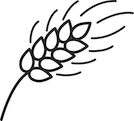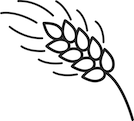Opioid use disorder: current trends and potential treatments (1 credit hour)
Program Summary: This course explores opioid use disorder and reviews trends, treatments, and approaches. The course offers an overview of the opioid crisis as one of our biggest public health challenges. Benefits and limitations of existing treatment options are examined with a discussion of naloxone and MOUDs. The course identifies possible ways to improve existing treatment strategies and highlights new approaches and medical developments. The course places an emphasis on treating the whole patient and suggests that future treatments may have the potential to cure, not just manage OUD. A second reading provides information on signs of an overdose, Naloxone, identifying OUD, and diagnostic criteria.
This course is recommended for social workers and counselors and is appropriate for beginning and intermediate levels of practice.
Reading 1: Opioid use disorder: current trends and potential treatments Authors: Yu Kyung Lee, Mark S. Gold, Kenneth Blum, Panayotis K. Thanos, Colin Hanna, and Brian S. Fuehrlein Publisher: Frontiers in Public Health
Reading 2: Naloxone DrugFacts (NIDA), Opioid Use Disorder: Diagnosis (CDC)
Course Objectives: To enhance professional practice, values, skills and knowledge by examining opioid use disorder, current trends, and potential treatments.
Learning Objectives: Describe the current trends of opioid use disorder. Describe the benefits and limitations of existing OUD treatment approaches. Identify new developments and potential new treatments for OUD.
Review our pre-reading study guide.
G.M. Rydberg-Cox, MSW, LSCSW is the Continuing Education Director at Free State Social Work and responsible for the development of this course. She received her Masters of Social Work in 1996 from the Jane Addams School of Social Work at the University of Illinois-Chicago and she has over 20 years of experience. She has lived and worked as a social worker in Chicago, Boston, and Kansas City. She has practiced for many years in the area of hospital/medical social work. The reading materials for this course were developed by another organization.





